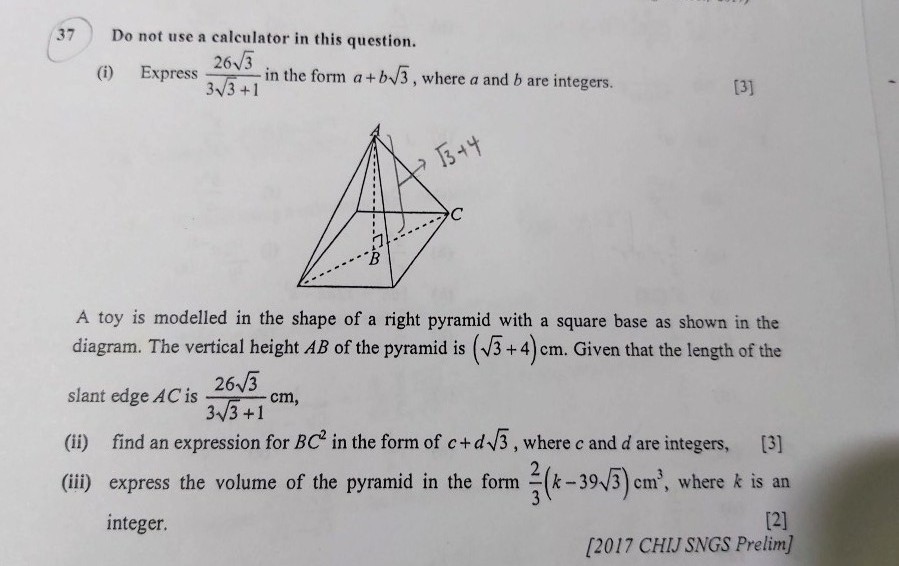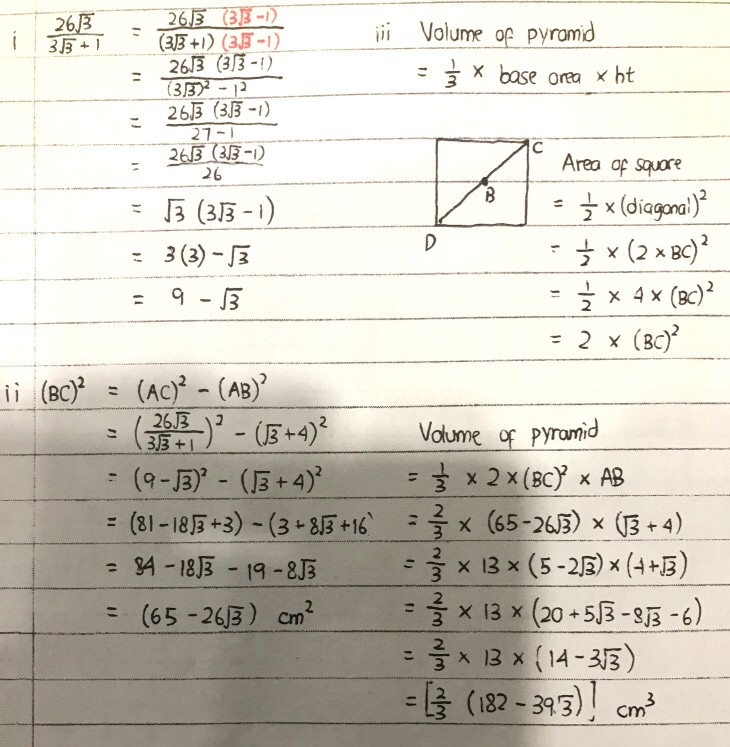Ask Singapore Homework?
Upload a photo of a Singapore homework and someone will email you the solution for free.

See 1 Answer
done
{{ upvoteCount }} Upvotes
clear
{{ downvoteCount * -1 }} Downvotes
Good evening Candice! Here are my workings for this question. The key point is to realise that the area of the square is half the square of the diagonal.
Date Posted:
4 years ago
Or you can divide the square into 4 congruent triangles. Each triangle is a right angled isosceles triangle with the perpendicular sides of length equal to BC
Area of square base
= Area of 4 triangles
= 4 x area of 1 triangle
= 4 x ½ x base x height
= 2 x BC x BC
= 2(BC)²
Or,
Since each triangle is a right angled isosceles triangle with perpendicular sides equal to BC, then by Pythagoras' theorem,
BC² + BC² = hypotenuse²
hypotenuse² = 2 BC²
Since the hypotenuse is actually one side of the square base, hypotenuse² is its area.
(Area of square = side x side)
So area of base = 2 BC²
We don't actually need the info that a square's area = ½ diagonal² , though it is good to know.
(Additional info : the area of a rhombus is similar, ½pq, where p and q are the different lengths of the two perpendicular diagonals. For the square it's actually the same, just that both diagonals are equal in length. while in a rhombus they aren't.)
Area of square base
= Area of 4 triangles
= 4 x area of 1 triangle
= 4 x ½ x base x height
= 2 x BC x BC
= 2(BC)²
Or,
Since each triangle is a right angled isosceles triangle with perpendicular sides equal to BC, then by Pythagoras' theorem,
BC² + BC² = hypotenuse²
hypotenuse² = 2 BC²
Since the hypotenuse is actually one side of the square base, hypotenuse² is its area.
(Area of square = side x side)
So area of base = 2 BC²
We don't actually need the info that a square's area = ½ diagonal² , though it is good to know.
(Additional info : the area of a rhombus is similar, ½pq, where p and q are the different lengths of the two perpendicular diagonals. For the square it's actually the same, just that both diagonals are equal in length. while in a rhombus they aren't.)
Thank you so much






